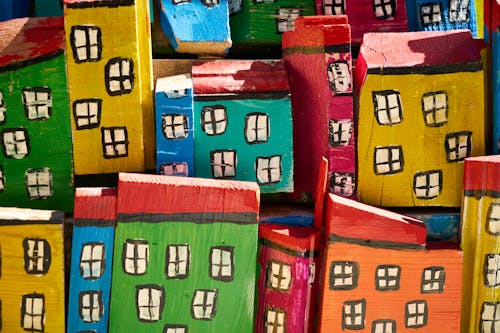Second-Hand Toys: The Green Choice for Responsible Parenting
Second-hand toys have emerged as a responsible choice for parents striving to make eco-friendly decisions. These pre-owned items not only reduce waste but also stimulate children's creativity and imagination. The growing demand for sustainable play options reflects shifting parenting paradigms toward mindful consumption. Embrace the world of second-hand toys, where families can create lasting memories while contributing to environmental conservation. As more parents recognize the importance of reusing and recycling, the trend of second-hand toys continues to grow. Discover how choosing pre-loved items can enhance playtime while teaching valuable lessons about sustainability to the next generation.
The Environmental Impact of Second-Hand Toys
The environmental considerations associated with children’s products cannot be overlooked, and that is where second-hand toys shine. Choosing pre-loved toys significantly reduces the amount of waste generated by disposable consumer culture. Every second-hand toy retains the potential to contribute to sustainability efforts, encouraging responsible consumption, and prolonging its life cycle. As families shift towards choices that reflect environmental consciousness, they foster habits in children that advocate for environmental preservation. Beyond individual purchases, the cumulative impact of choosing second-hand toys can lead to considerable reductions in production demands, thus lowering carbon footprints. Parents often find comfort in the knowledge that their choices positively impact the environment. In a world where every action counts, selecting second-hand toys becomes an effective method of raising eco-conscious kids while contributing to a greener future. The lesson in sustainability extends from the purchase to playtime, demonstrating the connection between their choices and their planet.
Fostering Imagination through Pre-Loved Toys
Second-hand toys hold an unrivaled capacity to foster creativity in children, expanding horizons through unstructured play. These toys often lack the rigidness of modern toys, which come equipped with screens and specific intended uses. The simplicity allows for boundless creativity, urging children to construct their narratives around their play experiences. As children engage with these quirky and unusual toys, their imagination flourishes. Displaying resourcefulness becomes a natural part of play, often leading to laughter, exploration, and the creation of captivating stories. Many parents cherish the transformative power that pre-loved toys hold, allowing them to divert from typical play patterns. The creativity instilled through second-hand toys results in developmental benefits that enhance problem-solving skills and innovative thinking, setting kids on the path to lifelong learning. This journey reinforces the idea that real play emerges from the freedom to explore rather than the confines of commercialized products.
Breaking Stigmas around Second-Hand Toys
Despite the numerous advantages, misconceptions around second-hand toys often hinder potential buyers. Parents frequently harbor beliefs that pre-loved toys are inferior, dirty, or unsafe; however, educational initiatives can break these stigmas. Increasing awareness and transparency regarding safety regulations in the second-hand toy market can help parents feel more confident in their choices. Regular inspections and maintaining hygiene should become the standard practice rather than an exception. Engaging with reputable sellers who prioritize safety adds an extra layer of security. As we dispel these misconceptions, more families can confidently navigate second-hand markets and embrace the value of these pre-owned toys. Community dialogues surrounding myths and truths can help normalize the idea of purchasing second-hand toys, opening doors to a wider acceptance of these responsible choices. Reframing the narrative around second-hand playthings is essential for fostering acceptance and improving sustainability practices.
Empowering Families through the Second-Hand Economy
Communities supporting second-hand toys foster collaboration among families, resulting in a stronger sense of belonging. This nurtures the second-hand economy, where families can connect, exchange items, and contribute to sustainability together. Parents bond over shared values and aspirations, forging friendships through common practices rooted in eco-friendliness. Online platforms continue to strengthen this social fabric, offering spaces dedicated to swapping, selling, or donating toys. The concept of reusing and sharing transforms communities into supportive networks, guiding families in making environmentally responsible decisions. Parents often find empowerment in shared responsibilities, reinforcing the lesson that every small action can yield substantial results. These interactions solidify positive environmental choices, illustrating that sustainability is a collective effort. The momentum generated by this collaborative approach fosters overall community resilience, building a more respectful relationship between consumers and the planet.
Looking to the Future: Second-Hand Toys in Responsible Parenting
As the search for eco-friendly solutions grows, the future of second-hand toys appears even more promising. The changing consumer attitudes among parents are steering trends toward sustainability, making the second-hand market increasingly relevant. Future innovations may include markets integrating education, allowing families to understand the impact of their choices while fostering community involvement. New collaborations among retailers, charities, and the community can result in thoughtful initiatives that engage families for the common good. Compliance with safety standards and better transparency can enhance confidence in purchasing second-hand toys, creating an even larger community of environmentally conscious families. The growing recognition of the value derived from reusing and recycling toys signifies a movement towards responsible parenting. By nurturing open conversations about sustainability and the importance of playtime, second-hand toys will continue to thrive in contemporary parenting strategies.
Conclusion
In conclusion, second-hand toys signify an essential shift toward responsible parenting, emphasizing sustainability and creativity. These pre-loved items facilitate connections between families, the environment, and imaginative play, nurturing children’s learning experiences. As awareness around environmental issues rises, second-hand toys enable families to contribute positively while teaching meaningful lessons about consumerism. The future of parenting undoubtedly includes a focus on sustainability, with second-hand toys taking center stage in the ongoing narrative. Embracing these choices helps cultivate eco-conscious minds in the younger generation, paving the way for a better tomorrow. Families who engage with second-hand toys are not just playing; they are building a foundational understanding of empathy and appreciation for the planet.
